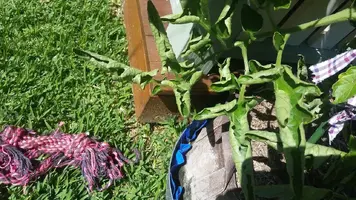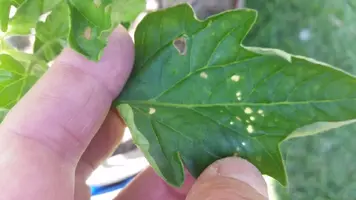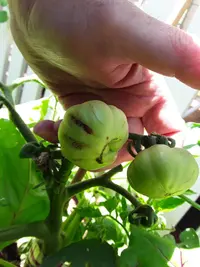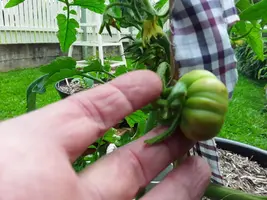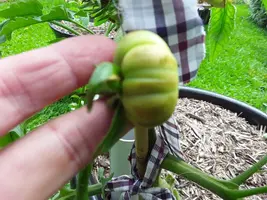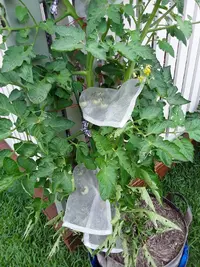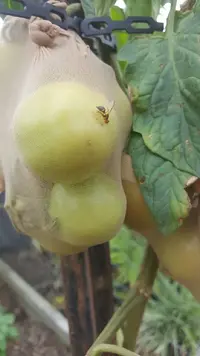I think this is late blight.
In anycase it is fungal based most likely due to the bags being put on the fruit then watering occurring. Even if you are very careful not to splash the bags, there is still a lot of humidity rising up from the soil and moving through the plants at watering time.
The amount of humidity determines whether these blights get a foot hold. I note in the bottom of one photo are those curled leaves again. Perhaps that was a very early sign of the fungus getting started.
None of us have had good weather conditions for tomato growing recently so don't feel singled out regarding this problem. Mine are terrible! The only way to get good tomatoes right now is out of an environment controlled greenhouse or hydroponics or maybe from out west somewhere!
For the home gardener the best way to overcome it is to be sure to have fantastic air circulation around and through each plant, so double spacing and remove most of the leaves. Its one reason why people remove most of the leaves from determinate types of tomatoes (which I think yours are). Some people go to extremes by only having drip irrigation under a dry mulch.
Here is a link to a page from America but still relevant to us as tomato diseases are the same worldwide.
https://www.gardeners.com/how-to/prevent-late-blight/7262.html
I know your brown is slightly different and your leaves look nice and healthy but most likely due to your plants being generally healthier so they aren't exhibiting many signs until the bags go on.
One way to know whether your plants have a blight is to sacrifice a main stem by cutting it off slightly diagonally. There will be a small or maybe larger black dot inside the stem. It is actually a thread containing the infection (a fungus,
Phytophthora infestans) that runs from roots to all growing tips and flowers.
There are sprays containing beneficial bacterium or copper and/or chemicals that might control it if you are firmly attached to those particular plants since you've put so much effort into them.
Otherwise pull them all out and dispose in the council bin. Dont put them in the compost or use any compost on the vegies that contained leaves from these plants. Don't plant any Solanaceae family of plants for a few years in those beds.
In future always buy seed or plants that are definitely not susceptible to blights. Some types of tomatoes are less susceptible than others. This means no heritage or home saved seed or purchased from a backyard plant supplier. Other than that, buy one of the sprays that will help control it and use it right from the seed set.
